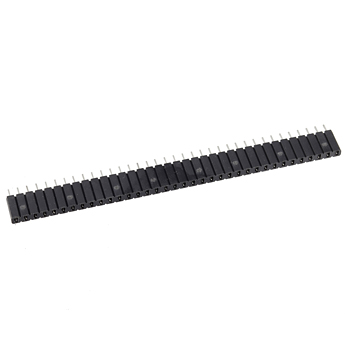There exist female headers like the one below.
They fit standard Dupont type male header rows and have better, more firm contact than the average flat female header row connectors.
They make it easy to quickly attach and detach the display to the board.
Less suitable for mounting in a case because the display stands off farther from the board than when soldering the pins directly to the board…
Soldering the display (header) directly to the board can be usefull to mount the display while keeping it compact.
